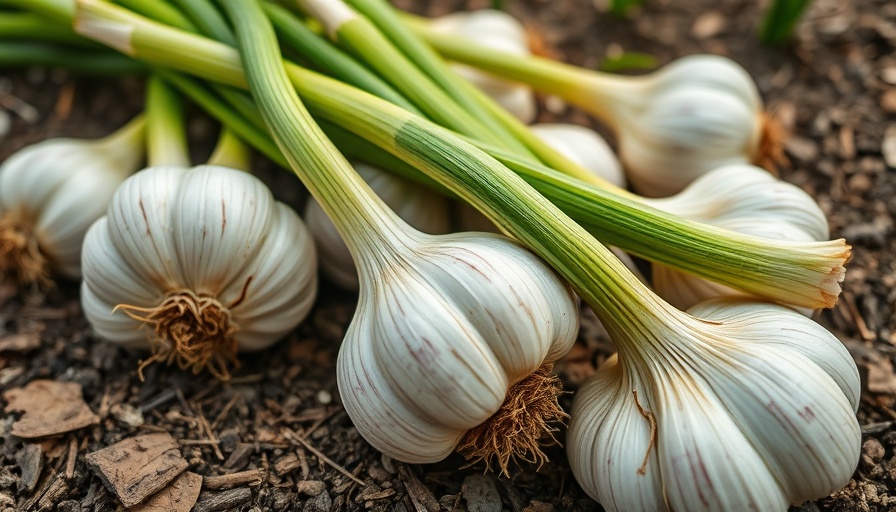
Garlic and Tomatoes: The Perfect Garden Companions
If you’ve ever spiced up your pasta with garlic and tomatoes, you already know how well these two ingredients complement each other in the kitchen. However, what if I told you they could also boost each other’s growth in your garden? Companion planting is a practice that pairs plants together to enhance their growth while naturally managing pests, and when it comes to garlic (Allium sativum) and tomatoes (Solanum lycopersicum), this is a pairing ripe for exploration.
The Historical Roots of Companion Planting
Companion planting isn't a new trend; it dates back to the dawn of agriculture. Ancient civilizations across the globe, including North American Indigenous nations and Egyptian farmers, utilized this technique to optimize their crops. The philosophy behind it is simple: certain plants help others grow better. In garlic and tomato’s case, they create a symbiotic relationship that every gardener should know about!
Benefits of Growing Garlic and Tomatoes Together
Let’s dig a little deeper into why garlic and tomatoes make such a remarkable match. Garlic is renowned for its pungent aroma, which is often attributed to its sulfur compounds. These compounds prove invaluable to gardeners, as they have natural pest-repelling properties that help keep harmful bugs at bay. For instance, compounds like diallyl disulfide confuse pests, leaving them disoriented and less likely to feed on your precious crops.
Additionally, garlic’s strong fragrance acts as a deterrent for larger animals, such as deer and rabbits, making it a fantastic candidate for your garden.
On the other side of the partnership, tomatoes thrive best in looser soil, which garlic can help maintain through its growth patterns. Their roots help aerate the soil, improving drainage and preventing waterlogging that can lead to root rot—an issue that commonly plagues tomatoes.
Optimal Planting Strategies
To maximize this duo's marvelous effects, timing and placement are essential. Garlic is best planted in the fall, giving it an early start for spring growth. Plant it about 4-6 inches apart, in a sunny spot where it can flourish along with tomatoes. Tomatoes, typically planted in late spring, should be set at a distance from the garlic to allow air circulation, which helps prevent potential diseases.
Pest Prevention Powers
The pest-fighting qualities of garlic are a gardener's dream. By cultivating garlic alongside your tomatoes, you can significantly reduce common pests like aphids and spider mites. Garlic releases sulfur into the soil, which not only enriches the ground but acts as a natural fungicide against many diseases that tomatoes are susceptible to.
Studies suggest that garlic can enhance the health and nutrient content of tomatoes, ultimately leading to better yields. This makes intercropping not just beneficial for pest control but for overall plant vitality.
Actionable Tips for a Thriving Garden
If you’re eager to try this dynamic duo in your backyard, here are some tips:
- Choose the Right Varieties: Hardneck garlic varieties tend to thrive better when paired with tomatoes, providing stronger pest deterrent effects.
- Maintain Soil Health: Regularly incorporate organic matter into the soil to support both crops, ensuring they have all the nutrients they need to flourish.
- Water Wisely: Both plants prefer well-draining soil, so be cautious about overwatering, as this can lead to root issues.
Final Thoughts on Garden Companions
Growing garlic alongside tomatoes is not only practical, but it also enriches the gardening experience. Engaging in such a synergistic planting method allows any gardener to enjoy healthier plants, less pest damage, and ultimately more bountiful harvests. Whether you have a backyard vegetable garden or a small urban plot, consider incorporating this fragrant duo into your growing plans!
Embrace the art of companion planting today and reap the many benefits nature has to offer. Happy gardening!
 Add Row
Add Row  Add
Add 




Write A Comment